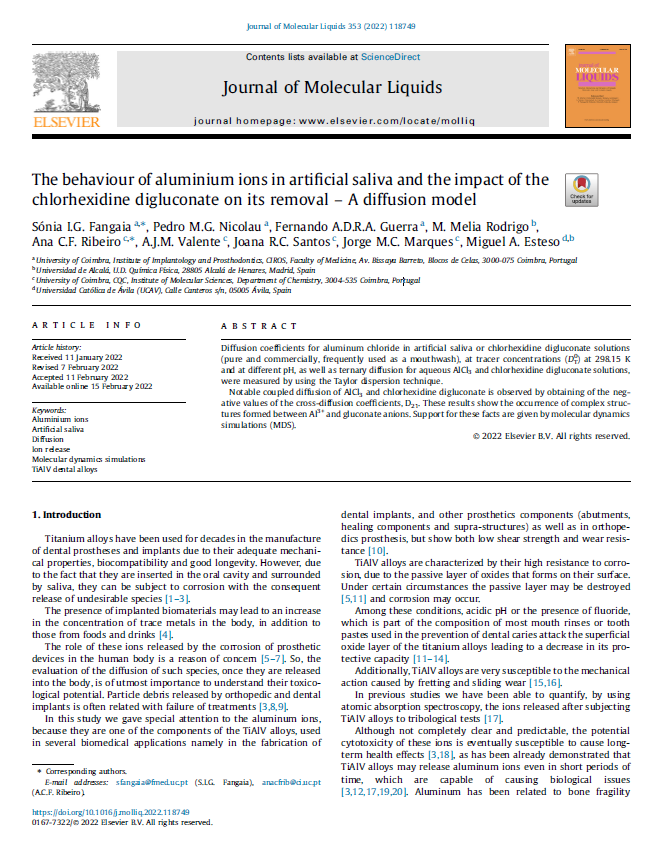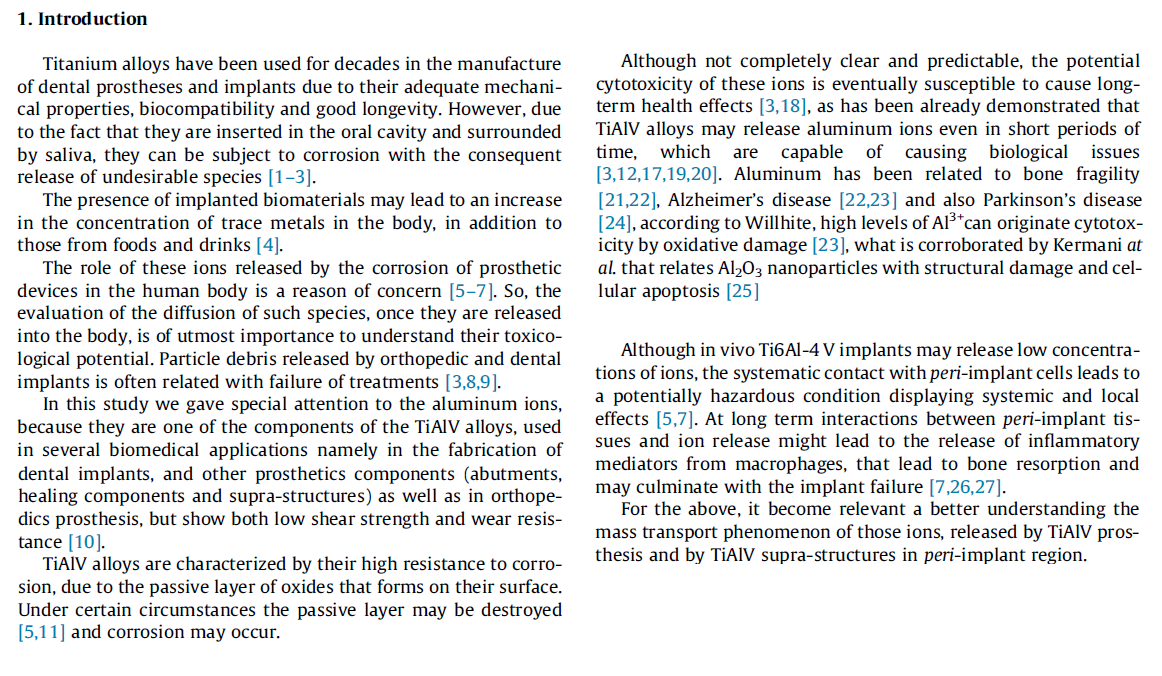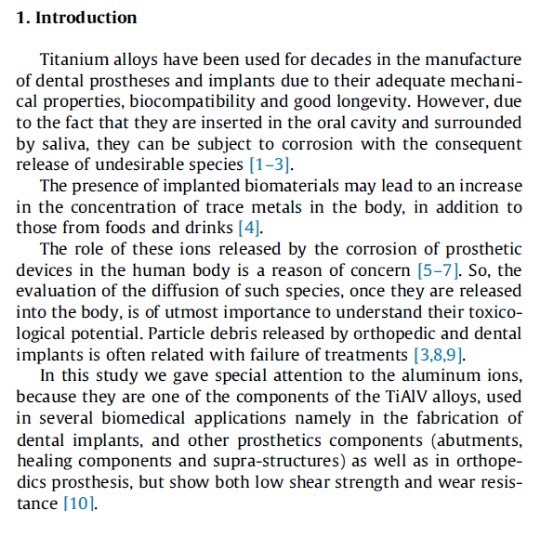The behaviour of aluminium ions in artificial saliva and the impact of the chlorhexidine digluconate on its removal – A diffusion model
Link: /uploads/arquivos/The-behaviour-of-aluminium-ions-in-artificial-saliva.pdf
https://www.sciencedirect.com/science/article/abs/pii/S0167732222002860
Sónia I.G.Fangaia Pedro M.G.Nicolau Fernando A.D.R.A.Guerra M. MeliaRodrigo Ana C.F.Ribeiro A.J.M.Valente Joana R.C.Santos Jorge M.C.Marques Miguel A.Estesod
Abstract
Diffusion coefficients for aluminum chloride in artificial saliva or chlorhexidine digluconate solutions (pure and commercially, frequently used as a mouthwash), at tracer concentrations (D0T) at 298.15 K and at different pH, as well as ternary diffusion for aqueous AlCl3 and chlorhexidine digluconate solutions, were measured by using the Taylor dispersion technique.
Notable coupled diffusion of AlCl3 and chlorhexidine digluconate is observed by obtaining of the negative values of the cross-diffusion coefficients, D21. These results show the occurrence of complex structures formed between Al3+ and gluconate anions. Support for these facts are given by molecular dynamics simulations (MDS).
The presence of implanted biomaterials may lead to an increase in the concentration of trace metals in the body, in addition to those from foods and drinks [4].
The role of these ions released by the corrosion of prosthetic devices in the human body is a reason of concern [5–7]. So, the evaluation of the diffusion of such species, once they are released into the body, is of utmost importance to understand their toxicological potential. Particle debris released by orthopedic and dental implants is often related with failure of treatments [3,8,9].
In this study we gave special attention to the aluminum ions, because they are one of the components of the TiAlV alloys, used in several biomedical applications namely in the fabrication of [21,22], Alzheimer’s disease [22,23] and also Parkinson’s disease [24], according to Willhite, high levels of Al3+can originate cytotoxicity by oxidative damage [23], what is corroborated by Kermani at al. that relates Al2O3 nanoparticles with structural damage and cellular apoptosis [25]
Although in vivo Ti6Al-4 V implants may release low concentrations of ions, the systematic contact with peri-implant cells leads to a potentially hazardous condition displaying systemic and local effects [5,7]. At long term interactions between peri-implant tissues and ion release might lead to the release of inflammatory mediators from macrophages, that lead to bone resorption and may culminate with the implant failure [7,26,27].




A presença de biomateriais implantados pode levar a um aumento na concentração de metais traço no organismo, além daqueles provenientes de alimentos e bebidas [4].
O papel desses íons liberados pela corrosão de dispositivos protéticos no corpo humano é motivo de preocupação [5-7]. Assim, a avaliação da difusão dessas espécies, uma vez liberadas no organismo, é de extrema importância para o entendimento de seu potencial toxicológico. Os detritos de partículas liberados por implantes ortopédicos e dentários estão frequentemente relacionados ao fracasso dos tratamentos [3,8,9].
Neste estudo demos especial atenção aos iões alumínio, pois são um dos componentes das ligas TiAlV, utilizadas em diversas aplicações biomédicas nomeadamente no fabrico de [21,22], doença de Alzheimer [22,23] e também Parkinson Na doença [24], segundo Willhite, altos níveis de Al3+ podem originar citotoxicidade por dano oxidativo [23], o que é corroborado por Kermani et al. que relaciona nanopartículas de Al2O3 com dano estrutural e apoptose celular [25]
Embora os implantes de Ti6Al-4 V in vivo possam liberar baixas concentrações de íons, o contato sistemático com as células periimplantares leva a uma condição potencialmente perigosa com efeitos sistêmicos e locais [5,7].
A longo prazo, as interações entre os tecidos periimplantares e a liberação de íons podem levar à liberação de mediadores inflamatórios dos macrófagos, que levam à reabsorção óssea e podem culminar com a falha do implante [7,26,27].
